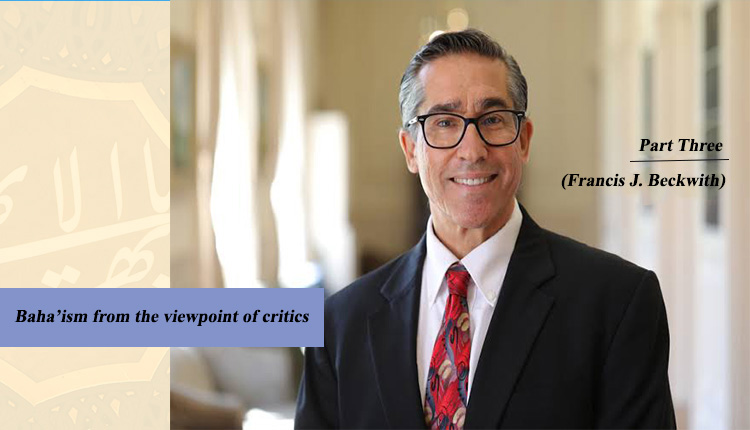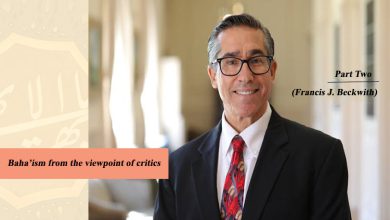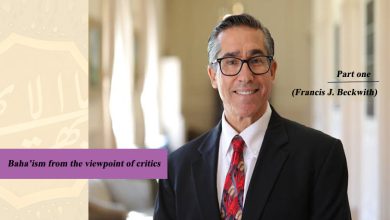
Baha’i sm and Jesus Christ
Jesus Christ will return from the heavens with physical and material body
In referring to the return of Christ and the biblical texts that mention this issue, the Baha’is and Baha’i scholars, before examining each biblical text, begin with this premise: the return of Christ is the same way; the signs and conditions about which have been talked have meanings and one should not be satisfied with their apparent meaning.
In other words, no text can convince a Baha’i that Christ will come again from the heavens in a physical body. His presumption prevents him from any kind of inquiry about the facts of the matter. This is highly unscientific and it is somehow the exact opposite of what Baha’is claim they are not. They talk about the necessary unity of science and religion, but fail in practice when examining the Bible.
Some Baha’i defenders point to the fact that the Bible says that the Messiah will come like a “thief in the night”. “He will come to a world that is immersed in spiritual neglect and those to whom the Messiah will come will not see him.”[ 4] However, when one reads these passages (Matthew 24:42-44; Thessalonians 5:2-4), it is clear that they are referring to the surprise factor of Christ’s return, not its secrecy. In Matthew chapter 24 verses 42:44, it is said, “Be ready therefore, for you do not know on what day your master will return: if the owner of the house had known at what hour the thief would come, he would have stayed awake and would not have let the thief enter his house. In the same way, you should always be ready for my sudden arrival so that you will not be surprised”.
However, Abdu’l-Bahá wrote that Christ’s return will be like His first coming (His birth as a baby). Don’t the scriptures tell us something else? Luke has recorded the ascension of Christ in Acts of the Apostles 1:9 to 11. He writes: “After Jesus finished these words, before their eyes he ascended to heaven and disappeared in a cloud. They were still staring at the sky when they suddenly noticed that two men in white were standing between them. They said: “O man of Galilee, why are you standing here and staring at the sky? Jesus went to heaven and as he went, he will return one day. Apart from Abdu’l-Bahá’s (non-verbal) presupposition, if we define this on its own, it is crystal clear that the above text claims that Christ will return as He ascended to heaven, therefore He will return in the same manner.
The Baha’i faith claims that Baha’u’llah is the Christ who has returned! They use many biblical texts to show it. Baha’u’llah’s misfortune is that he does not have the criterion of returning from the heavens. He also fails the test of Revelation 1:7, which says, “Behold, he is coming with clouds, and every eye will see him…”. Baha’u’llah was not seen by any eye; therefore, He is not the return of Christ. The Baha’is attempt to interpret Revelation 1:7 so that the eye does not refer to the outward eye but to the inner eye and insight, as Jehovah’s Witnesses have claimed. However, the examination of the Greek word eye makes the discussion meaningless. The same Greek word for the eye of the head is used by John in Revelation 7:1.
Matthew 24:30, another text that teaches about Christ’s return, says: “And finally the sign of my coming will appear in heaven. And all the peoples of the world will see me coming in the clouds of the sky with amazing power and glory”.
The New Testament does not say anything about the return of Christ in the form of a baby and another human being. His return will be the beginning of a global transformation that all human beings will witness. Baha’u’llah greatly underestimates the return of Christ in the Gospel narrative. In fact, Christ has warned us about people like Baha’u’llah. He says:
“Because many will come and say that they are the Messiah and will mislead many… In those days, if someone tells you that the Messiah has come to such and such a place, or that he is here or there, do not believe him”. (Matthew 24:5 and 23).
Denial of the material miracles of Jesus Christ by Abbas Effendi
According to Abdu’l-Bahá, Christ’s ascension to heaven is symbolic. It was the teachings and perfections of Jesus that spread among the nations and became alive and flourished. There is no physical ascension. In fact, Abdu’l-Bahá ignores the whole concept of it being miraculous and writes (without considering the facts): wherever in the books they talk about the resurrection of the dead, it means that the dead have been granted eternal life; whenever it is said that the blind can see, it means that he has reached the right understanding; Wherever it is said that the deaf can hear, it means that he has heard about the spiritual and heavenly world! This is clear from the text of the Gospel, where Christ says: “These are like what Isaiah said, they have eyes with which they do not see, ears with which they do not hear”.
Once again, Abdu’l-Bahá repeats the mistake of the past. Without examining the text of the New Testament, he assumes from the outset that any reference to miracles is symbolic. However, in this case, the presumption is justified by a text that the Baha’is willingly assume is non-symbolic (the above saying has been quoted from Jesus in Isaiah), but in Matthew 14:13 He speaks of a symbolic interpretation of miraculous healings, as Abdu’l-Bahá imagines. And his ascension does not speak. He talks about feeding four thousand and five thousand people:
Jesus understood what they were talking about. So he said: “I never meant that. Why don’t you understand? Have you lost your mind? You who have eyes, why don’t you see? Why don’t you open your ears to hear? Have you forgotten how I fed 5000 men with five loaves of bread? How many baskets were filled with leftovers? They answered: “Twelve baskets” He said: “When I fed 4000 people with seven loaves, how much was left?” They said: “Seven baskets.” He said: “Then why don’t you understand the meaning of my words?” (Mark 8:17).
In another text, where Christ gives a more direct statement from Isaiah, he speaks about the spiritual blindness of the unbelievers and their inability to understand his message, without using an allegory. His wording does not correspond in any way to the Baha’i presupposition. The text says: “That is why I speak these words so that people may hear and see but not understand. In the book of Prophet Isaiah, it is said about these people that: They hear but do not understand, they look but do not see”.
In Matthew 13:13 when we examine the text of the New Testament, it becomes clear to the reader that the text teaches the bodily ascension of Christ.
John (2:19) says: Jesus answered: “Very well, the miracle I will do for you is that you destroy this house of God and I will rebuild it in three days!” They said: “What are you saying? It took forty-six years to build this house. Do you want to make it in three days?”
So Jesus told Thomas to put his fingers on a physical object, not a symbolic illusion. (John 20:27) When the apostle of Thomas mistook Christ for a spirit, Jesus replied:
“Look at the places where the nails are in my hands and feet! You see that I am really myself. Touch me to remember that I am not a ghost. Because the soul does not have a body, but as you can see I do”. (Luke 24:39).
Since Abdu’l-Bahá and the Baha’i s are empty of miracles, they cannot change their presupposition about the spiritual interpretation of the Bible, and since the text of the New Testament clearly teaches the bodily ascension of Jesus Christ, we must accept Paul’s words where he says: “And if Christ has not ascended to heaven alive, so all our preaching are lies and your trust in God is also baseless and useless. (1 Corinthians 15:14).”
Baha’i’s approach to other religions
Udo Schaefer says that his rejection of historical Christianity was not based on science (in the sense of facts), but on his faith in Baha’u’llah’s claim that all religions are one. Assuming this, religions should not have “any fundamental contradictions”, “because God does not contradict himself”, but the truth is that every religion in the world has conflicts with other religions.
The simple fact is that historical manifestations, even according to Baha’i rules, are not part of divine manifestations!
Conclusion of chapter 3
1- We have already shown that Baha’u’llah is not the return of Christ, because it does not correspond to specific biblical criteria (for example, being seen by everyone’s eyes, coming down through the clouds, etc.), therefore the end of time and the end of the age have not happened yet. It is enough for a person to refer to chapters 24 and 28 of the Gospel of Matthew and read Christ’s description of the end of time, and immediately realize that the end of time includes the return of Christ which we showed previously that it does not apply to Baha’u’llah. It doesn’t matter whether we call it “the end of the world”, “the end of time”, or “the end of the age”. Since Christ has not yet returned, we have not reached the end of any of them.
2- The attributes of God, as revealed by his so-called manifestations, are not compatible with each other. The Baha’i beliefs have an internal conflict and the criteria proposed for the so-called manifestations of God are not compatible with all those that have been proposed as manifestations. The objections and objections of Baha’is to the belief in the ascension, the return (Rej’at) and the privileges and attributes of Jesus Christ are all based on weak arguments. Therefore, based on this research, the Baha’i belief and teachings are neither logically nor theologically convincing enough to influence our beliefs.





